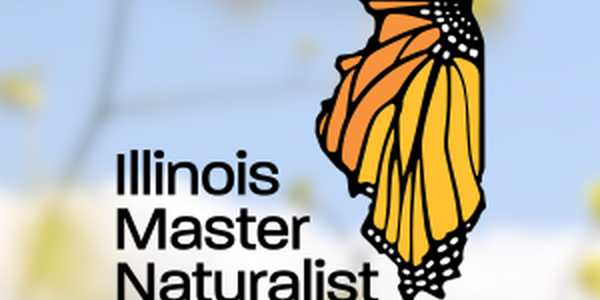Invasive Plants
1 out of 3 plants in Illinois woodlands, wetlands, and grasslands are non-native.
Plant invasions can cause economic damage, displace native species, alter ecosystem functions, and interfere with ecological restoration goals. Aggressive invasive species form a monoculture, competing with native plants for resources. Some native plants have allelopathic tendencies and put toxins into the soil that inhibit the growth of other species. In ecosystems dominated by invasive species, wildlife struggle to find food and shelter.
Rules and Regulations
Illinois Regulations Regarding Invasive Plant Species
Plants regulated by the Illinois Exotic Weed Act: Japanese honeysuckle, multiflora rose, purple loosestrife, common buckthorn, glossy buckthorn, saw-toothed buckthorn, dahurian buckthorn, Japanese buckthorn, Chinese buckthorn, kudzu, exotic bush honeysuckles, exotic olives, salt cedar, poison hemlock, giant hogweed, Oriental bittersweet, teasel, and knotweed.
Control Methods
The negative impacts of invasive plants can be reduced by the focused and aggressive use of a combination of mechanical, cultural, and chemical control methods, which will support the restoration of a healthy and diverse natural habitat.
Control invasive species early, when you first notice new populations. Always verify the correct identification of target species before applying control treatments.
Mechanical Control
there are many mechanical treatment options. Large machinery may be the most cost-effective way to control some dense infestations. Grinding or chipping, mowing or bush hogging can remove large plants, preparing stumps and later new growth for herbicide.
Take care with heavy equipment to minimize soil ruts; disturbance, and compaction which can give opportunity for further invasion. Clean seeds and debris from equipment to avoid spreading invasives
Cultural Control
Prescribed fire is an important current and historical management tool for fire-tolerant plant communities. Fire promotes native plants and can stunt and kill some invasive plants. Integrated control with mechanical and chemical control practices is necessary because some invasive plants are stimulated by fire. See 525 ILCS 37/The Illinois Prescribed Burning Act for landowner rights and restrictions on the use of prescribed fire.
Chemical Control
Herbicide can be a low-cost, low-labor option for large infestations and large trees and shrubs. Herbicides are a valuable tool, but please use a cautious and conservative approach. Apply the minimum amount of the most appropriate chemical to achieve management goals. Always read and follow product labels before use. Avoid impacting desirable plants with herbicide overspray. Apply enough herbicide to wet foliage, but not so much that it drips off.
Anyone who applies pesticide on public lands must be licensed. Learn more from the Pesticide Safety Education Program.
The recommended herbicides are in liquid form and are mixed in liquid, oil or water, to give the desired percent solution. Recommendations for mixing are given in a volume-to-volume (v/v) percentage. Example: A 2% v/v glyphosate in water would be 2% glyphosate and 98% water.
- Foliar application: Applications use a low concentration of herbicide, but large amounts of the herbicide solution may be required to cover all the leaves of the plants. Plants must have a healthy leaf canopy for foliar applications to be successful. Plants must not be under drought stress and temperatures must be around or above 60ºF.
- Cut stump application: Plants are cut down near the ground. Herbicide is applied to the cut stem or stump. Consider adding a dye to herbicide solutions to aid in tracking applications.
- Basal bark application: Apply the herbicide directly to all sides of the bark of the plant from the ground level to 15 inches high. for multi-stemmed shrubs, all of the stems need to be treated. A backpack sprayers is ideal for this method.
Biological Control
This method reduces but does not eliminate invasive populations. It involves the intentional release of a natural control agent, such as a predator, pathogen, or parasitoid. Insects are often used to reduce the competitive ability of invasive plants to reproduce.
Restore natural areas and plant native species.
After removing invasive species, existing native plants may need help recovering. In some cases, replanting with native plants may be necessary for restoration. When planting native species, try to use local-ecotypes of seeds or plants from within 100 miles of your location. Native plants that are adapted to local climates and easier to grow. They also provide food and shelter for pollinators and other wildlife.
Restoring diverse native plant communities will help prevent future invasions by strengthening the ecosystem, but continue to monitor for invasive species.
In natural areas
Native plants for the home landscape
- Invasive plants and beautiful native alternatives, Headwaters Invasive Plant Partnership
- For the Home Landscape
- Native Spring Ephemerals for the Home Garden
- Dry Woodland Garden
- Wet Woodland Garden
- Woodland Border Garden
- Woodland Garden
- Full Sun Rain Garden – A Native Planting Guide for Sunny Rain Garden Beds
We have included the most common and problematic plant species of Illinois environmental, agricultural, and horticultural concern on this website. It is not a comprehensive list.



